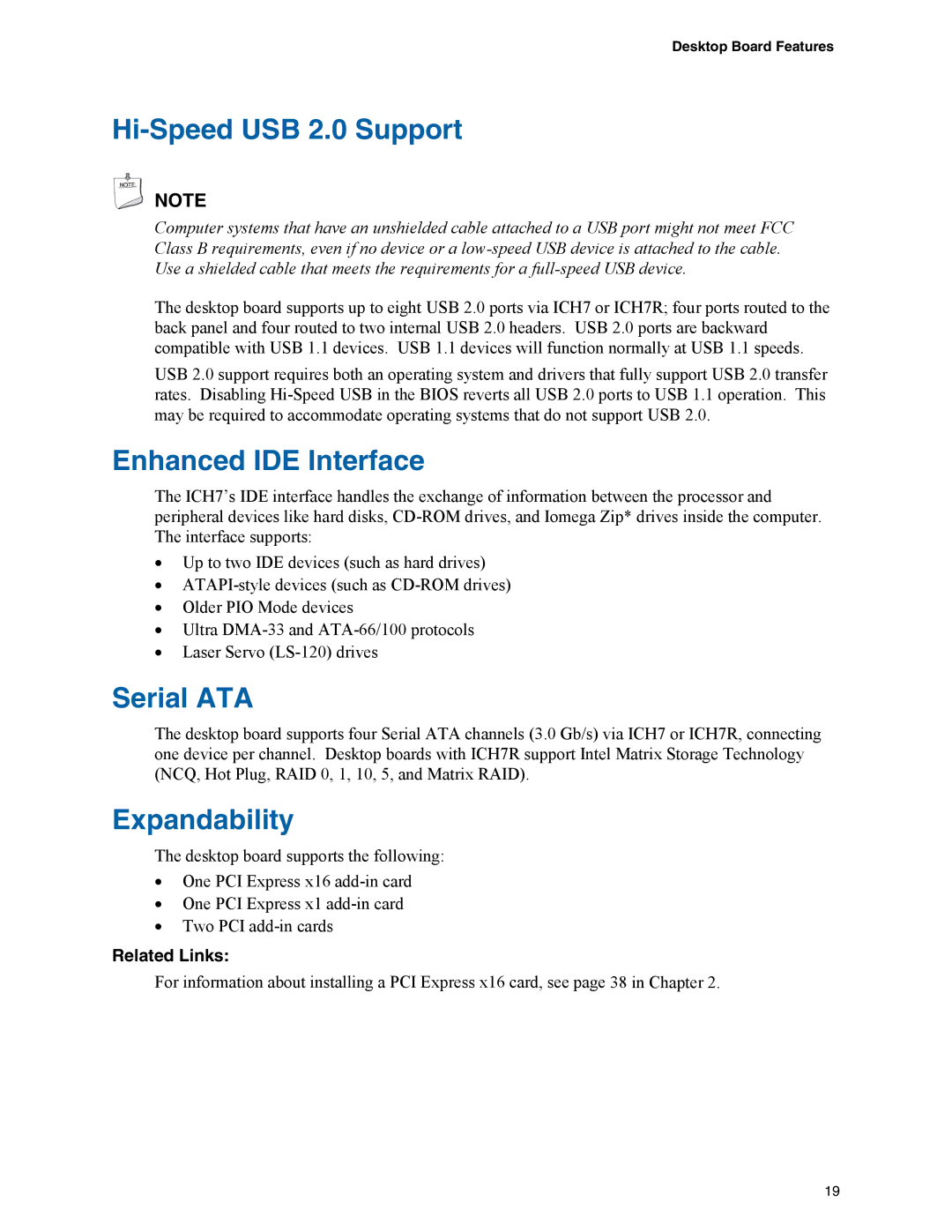Desktop Board Features
Hi-Speed USB 2.0 Support
NOTE
Computer systems that have an unshielded cable attached to a USB port might not meet FCC Class B requirements, even if no device or a
The desktop board supports up to eight USB 2.0 ports via ICH7 or ICH7R; four ports routed to the back panel and four routed to two internal USB 2.0 headers. USB 2.0 ports are backward compatible with USB 1.1 devices. USB 1.1 devices will function normally at USB 1.1 speeds.
USB 2.0 support requires both an operating system and drivers that fully support USB 2.0 transfer rates. Disabling
Enhanced IDE Interface
The ICH7’s IDE interface handles the exchange of information between the processor and peripheral devices like hard disks,
•Up to two IDE devices (such as hard drives)
•
•Older PIO Mode devices
•Ultra
•Laser Servo
Serial ATA
The desktop board supports four Serial ATA channels (3.0 Gb/s) via ICH7 or ICH7R, connecting one device per channel. Desktop boards with ICH7R support Intel Matrix Storage Technology (NCQ, Hot Plug, RAID 0, 1, 10, 5, and Matrix RAID).
Expandability
The desktop board supports the following:
•One PCI Express x16
•One PCI Express x1
•Two PCI
Related Links:
For information about installing a PCI Express x16 card, see page 38 in Chapter 2.
19
